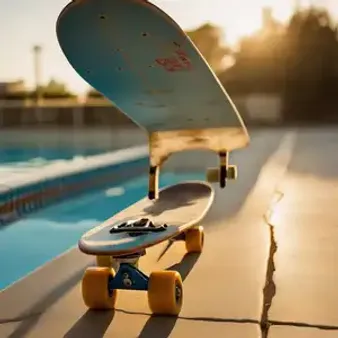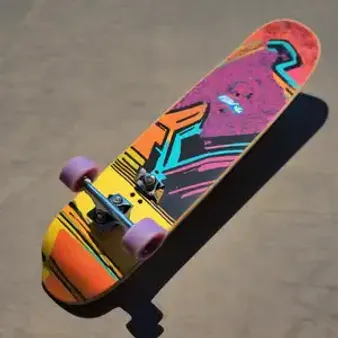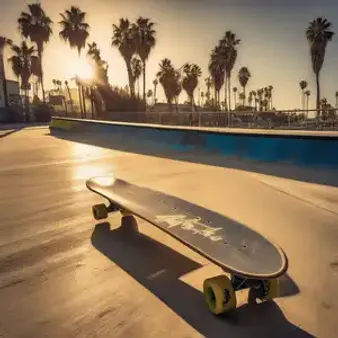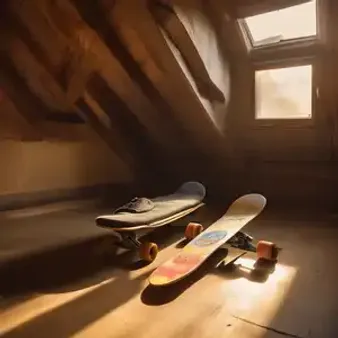Table of Contents
Step back in time to 1977, a year of significant transformation for skateboarding. This was a period when the 1977 skateboard scene exploded, witnessing a surge in innovation and popularity. At kizworld, we're passionate about exploring the history of skateboarding, and this article delves into the unique characteristics of 1977 skateboards, the iconic figures who rode them, and their lasting impact on the sport we know and love today.
Feature | Description |
|---|---|
Decks | Typically made of maple plywood; wider and more concaved than previous years, allowing for greater control and tricks. |
Trucks | Improved precision and stability compared to earlier models, facilitating more complex maneuvers. |
Wheels | Made of polyurethane, offering enhanced grip and a smoother ride on various surfaces. |
Key Innovations | Introduction of urethane wheels, wider decks, and more sophisticated truck designs. |
Influential Skateboarders | Legends like Tony Alva, Stacy Peralta, and Jay Adams shaped the skateboarding landscape with their innovative styles and tricks. |
Collecting Value | Original 1977 skateboards, especially those associated with iconic brands or skateboarders, can hold significant value for collectors. |
The Rise of the 1977 Skateboard
From Sidewalks to Empty Pools: A New Era of Skateboarding
1977 wasn't just another year; it was a turning point for skateboarding. Imagine this: the sport was moving from sidewalks to empty swimming pools. It was like discovering a whole new world of tricks and possibilities! This shift wasn't just about a change in location; it reflected a whole new attitude. Skateboarders were getting more daring, more creative, and the 1977 skateboard was right there with them, evolving to meet their needs.
Think about it: wider decks gave riders more foot space for balance, and the innovative urethane wheels provided better grip and a smoother ride on those slick pool surfaces. It's like the difference between riding a clunky old bike and a brand new BMX. This era was all about pushing boundaries and experimenting with style, and the 1977 skateboard became the tool for this exciting revolution. Did you know this era even saw the birth of some iconic skateboarding brands like WKND Skateboards? It was a time of raw energy and innovation that forever changed the face of skateboarding.
Feature | Impact |
|---|---|
Wider Decks | More foot space for balance and tricks |
Urethane Wheels | Better grip and smoother ride |
The Zephyr Competition Team: Legends in the Making
You know how certain athletes become legends? Well, 1977 was when a group of young skateboarders from Venice Beach, California, known as the Zephyr Competition Team (Z-Boys), took the world by storm. They weren't just good; they were innovators, bringing a whole new style to the sport that was raw, aggressive, and totally captivating. Think of them as the rock stars of skateboarding – they were rebels with a cause, pushing limits and redefining what was possible on a skateboard. Their influence transcended skateboarding; they became cultural icons, influencing fashion, music, and youth culture in general.
These guys, like Tony Alva, Jay Adams, and Stacy Peralta, weren't afraid to take risks and try new things. They were like the pioneers of skateboarding, constantly experimenting with new tricks and pushing the boundaries of the sport. You can learn more about skateboarding legends on our page dedicated to Louie Lopez. Their daring spirit and innovative style, combined with the evolving 1977 skateboard, created a perfect storm that propelled skateboarding into the mainstream and inspired generations to come.
- Tony Alva
- Jay Adams
- Stacy Peralta
The Rise of the 1977 Skateboard
1977 Skateboard Design and Innovation
Alright, imagine this: 1977, skateboards weren't just planks of wood anymore. They were evolving, getting wider decks so you had more room to land tricks. It's like going from a tiny tricycle to a big, sturdy bike. Plus, they started using these awesome urethane wheels, which were way grippier and smoother than the old clay ones. It's like the difference between walking on ice and walking on a rubber mat! How to train like a skateboarder is an article that I think you will enjoy. These new designs made a HUGE difference. You could carve harder, ride faster, and pull off tricks that were impossible before. It's like skateboarding got a turbo boost!
Component | Improvement |
|---|---|
Decks | Wider for better balance and trick execution |
Wheels | Urethane for enhanced grip and a smoother ride |
1977 Skateboard Design and Innovation
Iconic 1977 Skateboarders and Their Influence
The Z-Boys: Trendsetters on Wheels
Picture this: 1977, Venice Beach, California. A group of young skateboarders known as the Z-Boys were changing the game. These guys weren't just riding skateboards; they were inventing new ways to ride, like surfing on concrete waves. They took their inspiration from the ocean, bringing a fluid, aggressive style to skateboarding that was totally new. Think of them as the rock stars of skateboarding – they were rebels with a cause, pushing limits and redefining what was possible on a 1977 skateboard. Their influence transcended skateboarding; they became cultural icons, influencing everything from fashion to youth culture in general. It's like how breakdancers changed the way people thought about dancing – the Z-Boys did that for skateboarding.
Legends in the Making: Tony Alva, Jay Adams, and Stacy Peralta
These guys, like Tony Alva, Jay Adams, and Stacy Peralta, weren’t afraid to take risks and try new things. They were like the pioneers of skateboarding, constantly experimenting with new tricks and pushing the boundaries of the sport. You can learn more about skateboarding legends on our page dedicated to Louie Lopez. Their daring spirit and innovative style, combined with the evolving 1977 skateboard, created a perfect storm that propelled skateboarding into the mainstream and inspired generations to come. It's like how the invention of the electric guitar changed music – the Z-Boys had that kind of impact on skateboarding.
Skater | Contribution |
|---|---|
Tony Alva | Pioneered aggressive vert skating |
Jay Adams | Known for his smooth and powerful style |
Stacy Peralta | Mastered technical tricks and flow |
Iconic 1977 Skateboarders and Their Influence
Collecting and Valuing 1977 Skateboards Today
You know how some toys become super valuable over time? Well, it's the same with skateboards! Those 1977 skateboards, especially the ones from famous brands or ridden by legendary skaters, can be worth a lot of money now. It's like finding a rare baseball card or a vintage comic book. Some collectors seek out these boards because they're a piece of skateboarding history, and they remind us of a time when the sport was really taking off. You can imagine these boards have seen some amazing tricks and been part of skateboarding's evolution! If you've got one tucked away in your garage, it might be worth checking out skate websites to see what it's worth!
Brand | Value |
|---|---|
Dogtown | High |
Zephyr | High |
Sims | Medium |
Collecting and Valuing 1977 Skateboards Today
Final Thought
The 1977 skateboard stands as a testament to a pivotal year in skateboarding history. It reflects a time of rapid evolution, groundbreaking design, and the emergence of legendary skateboarders. Whether you're a seasoned collector or simply fascinated by the sport's origins, the 1977 skateboard offers a captivating glimpse into the roots of skateboarding culture and its enduring legacy.